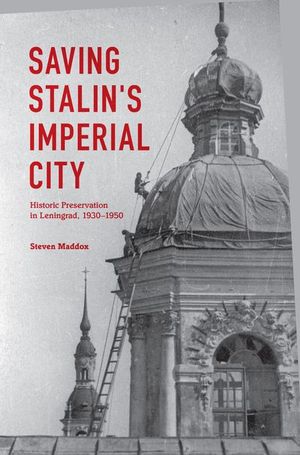Saving Stalin's Imperial City
Published by Indiana University Press
“Succeeds in explaining how and why a war-ravaged city suffering acute shortages invested its scant resources in protecting and reconstructing monuments.” —Slavonic and East European Review
Saving Stalin’s Imperial City is the history of the successes and failures in historic preservation and of Leningraders’ determination to honor the memory of the terrible siege the city had endured during World War II. The book stresses the counterintuitive nature of Stalinist policies, which allocated scarce wartime resources to save historic monuments of the tsarist and imperial past even as the very existence of the Soviet state was being threatened, and again after the war, when housing, hospitals, and schools needed to be rebuilt.
Postwar Leningrad was at the forefront of a concerted restoration effort, fueled by commemorations that glorified the city’s wartime experience, encouraged civic pride, and mobilized residents to rebuild their hometown. For Leningrad, the restoration of monuments and commemorations of the siege were intimately intertwined, served similar purposes, and were mutually reinforcing.
“A most welcome addition to the historiography of Europe’s bombed cities and their reconstruction after World War II.” —Journal of Modern History
Saving Stalin’s Imperial City is the history of the successes and failures in historic preservation and of Leningraders’ determination to honor the memory of the terrible siege the city had endured during World War II. The book stresses the counterintuitive nature of Stalinist policies, which allocated scarce wartime resources to save historic monuments of the tsarist and imperial past even as the very existence of the Soviet state was being threatened, and again after the war, when housing, hospitals, and schools needed to be rebuilt.
Postwar Leningrad was at the forefront of a concerted restoration effort, fueled by commemorations that glorified the city’s wartime experience, encouraged civic pride, and mobilized residents to rebuild their hometown. For Leningrad, the restoration of monuments and commemorations of the siege were intimately intertwined, served similar purposes, and were mutually reinforcing.
“A most welcome addition to the historiography of Europe’s bombed cities and their reconstruction after World War II.” —Journal of Modern History
BUY NOW FROM
COMMUNITY REVIEWS

